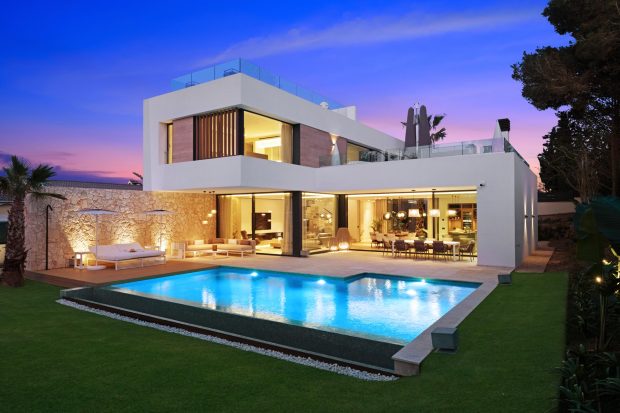Whether you’re planning to build a new swimming pool or renovating an existing one, the material you choose for its construction plays a pivotal role. It not only influences the pool’s aesthetics but also its durability and maintenance requirements. In this blog post, expert pool designers from Baton Rouge will explore various pool materials, focusing on their advantages, drawbacks, and unique characteristics.
How do I choose the material for my pool?
Let’s take an in-depth look at the most common pool materials and their characteristics and advantages:
1. Concrete Pools
A popular choice among homeowners, concrete allows for custom shapes and sizes, making it perfect for a bespoke pool design. You can choose between shotcrete and gunite, two types of concrete used in pool construction. They are essentially the same material; the difference lies in the time of mixing the components.
Concrete pools are robust, long-lasting, and can withstand various climate conditions. They’re also easily adaptable to in-pool features like waterfalls, tanning ledges, or beach entries. However, they require more maintenance than other materials, including regular cleaning and occasional resurfacing to prevent algae buildup.
2. Fiberglass Pools
Fiberglass pools are pre-made in a factory and delivered to your site for installation. This manufacturing method ensures a smooth, nonporous surface that inhibits algae growth, significantly reducing maintenance needs. Fiberglass pools are also faster to install compared to concrete, often requiring just a few weeks.
One downside to fiberglass is the limited customization options. Since the pools are premade, you can’t get a specific shape or size that isn’t in the manufacturer’s lineup. Also, fiberglass pools can develop cracks under specific circumstances, such as when the pool is emptied and the groundwater level is high.
3. Vinyl Liner Pools
Vinyl liner pools have a custom-made sheet of vinyl between the water and the pool structure. This material offers smooth walls and a lower initial cost than concrete or fiberglass. The vinyl liners are customizable and can fit any pool shape or size.
However, the liners are susceptible to tears and punctures. They also need replacement every 7 to 10 years, making them less durable than other materials. A significant advantage, though, is the lower likelihood of fostering algae, keeping your maintenance efforts in check.
4. Ceramic and Tile Pools
A ceramic or tile pool can provide a stunning visual appeal, mimicking the luxurious feel of commercial spa resorts. Ceramic pools combine the benefits of fiberglass with a high-end finish, whereas tile pools, typically using glass or ceramic tiles, offer a stunning aesthetic unmatched by other materials.
However, ceramic and tile pools can be expensive, both in terms of installation and maintenance. If you’re considering this option, be prepared for a significant investment.
5. Stainless Steel and Aluminum Pools
Recently, more homeowners are exploring pools made from stainless steel or aluminum. These pools are incredibly durable, often outlasting concrete or fiberglass options. They can also be fully customized and provide a unique, contemporary aesthetic.
Like with ceramic and tile, the initial investment for metal pools can be substantial. These materials can also get quite hot under the sun, potentially leading to discomfort for swimmers.
Choosing the right pool material involves considering factors like budget, desired aesthetics, maintenance requirements, and long-term durability. It’s important to consult with a professional pool builder to make an informed decision based on your specific needs and preferences.
In the end, the perfect pool material for you is one that fits your lifestyle and adds value to your home. Enjoy the process of exploring these options as you take a step closer to achieving your dream pool.




